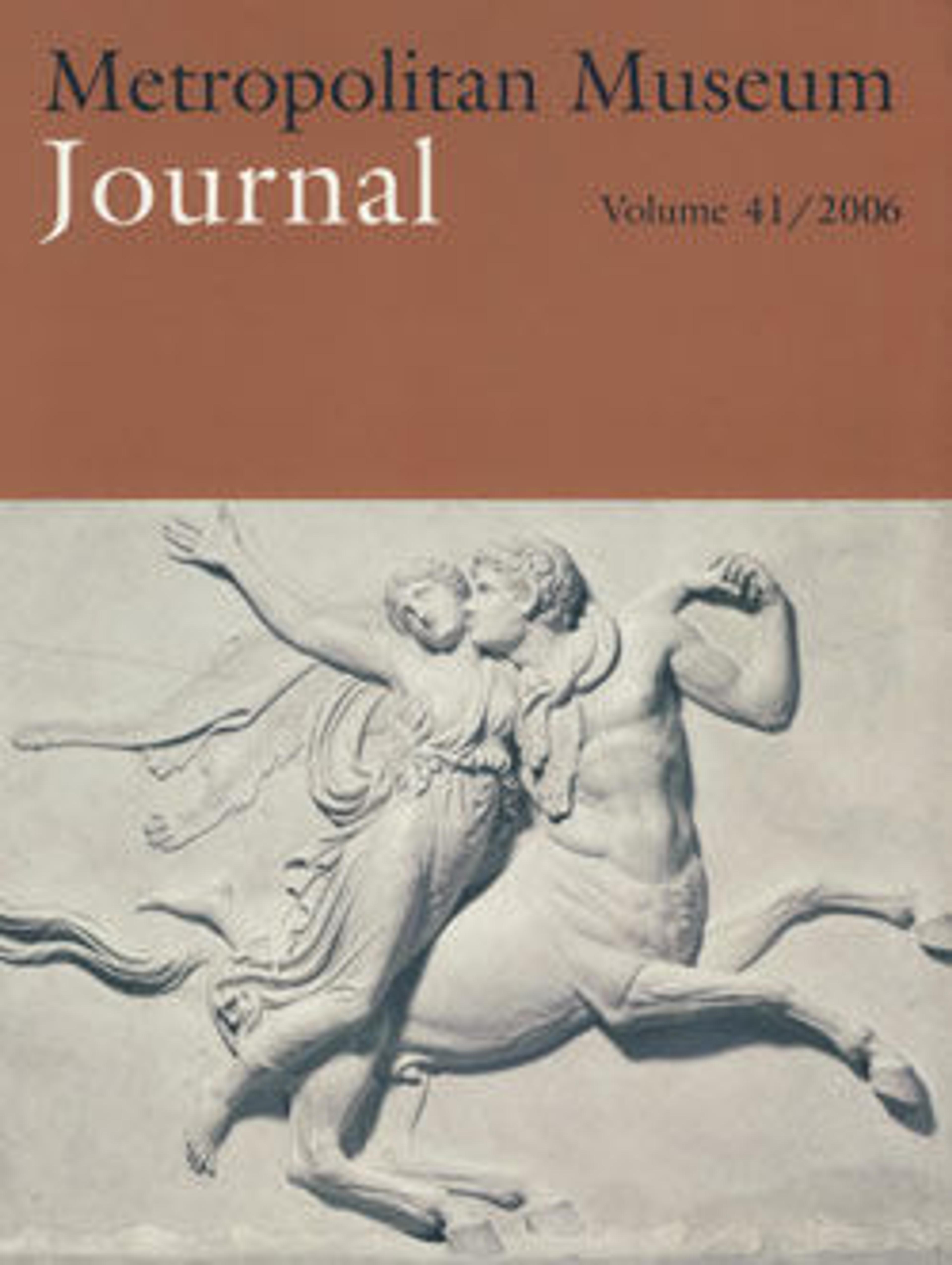Centaur and Dryad
Centaur and Dryad ranks as one of the major critical successes of Manship's early career. He modeled the group in Rome, commencing studies as early as 1909, and completed its elaborate pedestal in New York. The subject represented, a lecherous centaur attempting to embrace a protesting wood nymph, can be found in art of the ancient world. The rectangular pedestal of exquisite workmanship complements the theme of the group above it, the consumption of wine that releases the passions of the centaur, a mythological creature that is half-man and half-horse. There are low-relief scenes of satyrs chasing maenads, with two griffins on either narrow end. Around the bottom of the base is a decorative border of animals, birds, and dolphins.
Artwork Details
- Title:Centaur and Dryad
- Artist:Paul Manship (American, St. Paul, Minnesota 1885–1966 New York)
- Date:1909–1913; cast 1913–14
- Medium:Bronze
- Dimensions:27 3/4 x 21 1/4 x 11 1/8 in. (70.5 x 54.0 x 28.3 cm)
Base: 1 5/8 x 19 3/4 x 11 1/8 in. (4.1 x 50.2 x 28.3 cm) - Classification:Sculpture
- Credit Line:Amelia B. Lazarus Fund, 1914
- Object Number:14.61
- Curatorial Department: Modern and Contemporary Art
More Artwork
Research Resources
The Met provides unparalleled resources for research and welcomes an international community of students and scholars. The Met's Open Access API is where creators and researchers can connect to the The Met collection. Open Access data and public domain images are available for unrestricted commercial and noncommercial use without permission or fee.
To request images under copyright and other restrictions, please use this Image Request form.
Feedback
We continue to research and examine historical and cultural context for objects in The Met collection. If you have comments or questions about this object record, please contact us using the form below. The Museum looks forward to receiving your comments.
